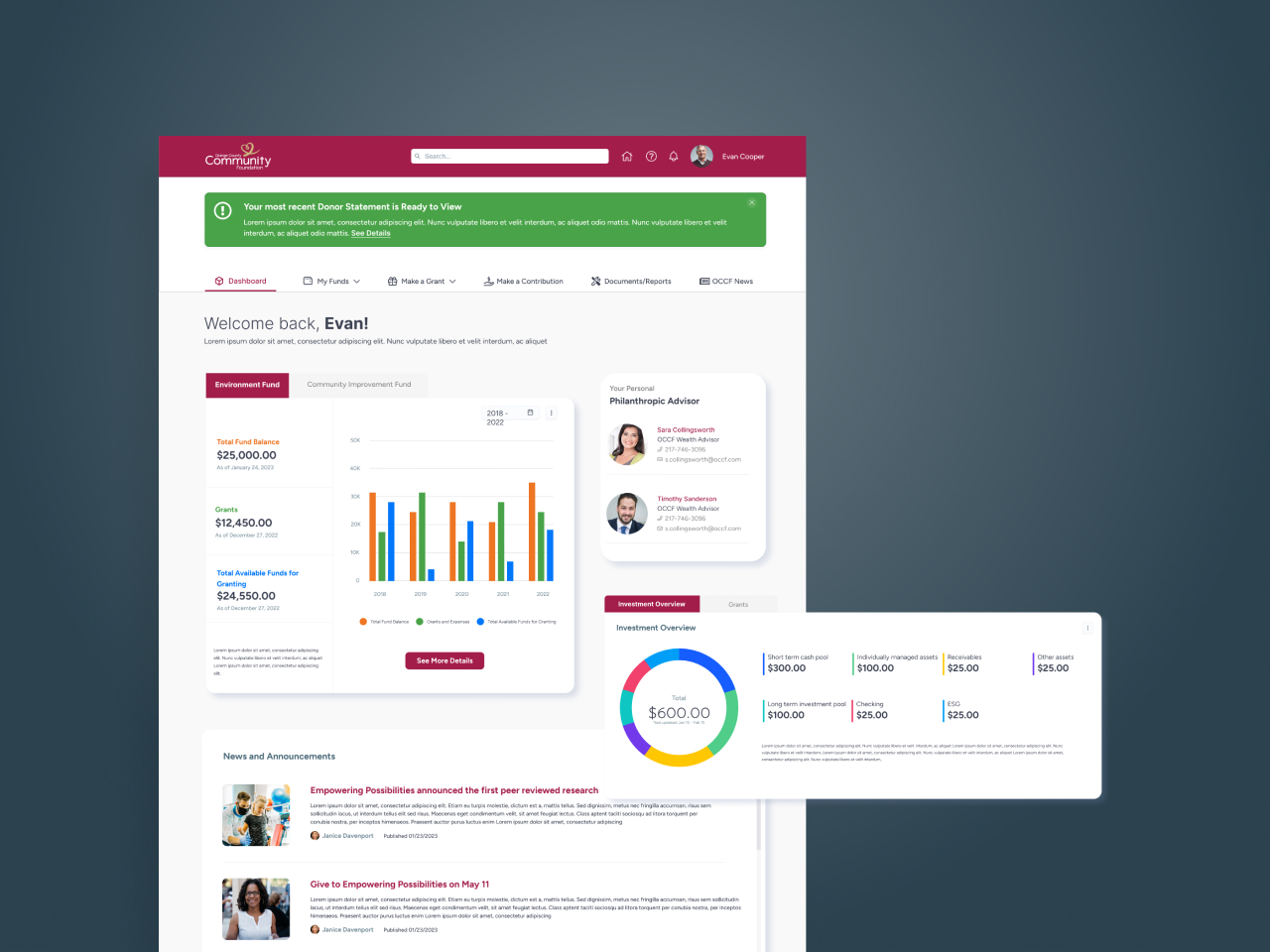Orange County Community Foundation, OCCF, partners with families and businesses to help support important causes in Orange County, California. However, the donor portal they were using to collect funds was hindering their ability to fulfill their philanthropic mission. OCCF engaged Veracity to help realize a vision for modernizing their financial reporting by enhancing the integration of their financial system with Salesforce, bringing that data to donors in a more compelling way.
Partnering alongside the OCCF, our team defined a clear vision, developed user stories and created a visual design and phased-growth roadmap, all based on powerful insights gathered from both donors, stakeholders and internal users supporting the mission.
Veracity modernized donor giving by pushing the boundaries of Salesforce, creating a phased-growth roadmap based on insights gathered from donors, stakeholders, and internal users.


